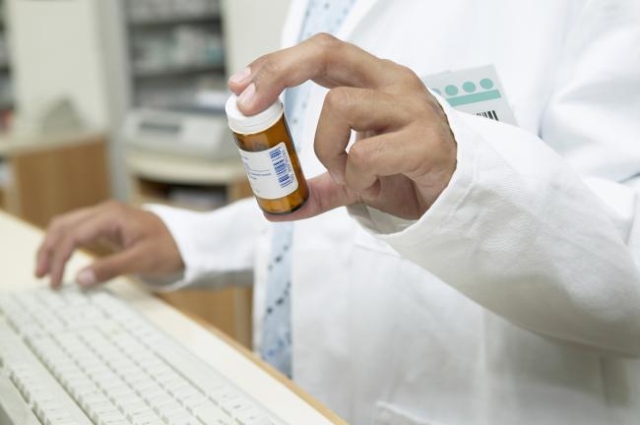How to trim prescription drug costs
Prescription medication has been a big expense — if not the biggest — for many consumers in the past 10 years or more.
A 2014 American Association of Retired Persons’ report titled “Rx Price Watch Report” found that prices for widely used brand name prescription drugs outpaced inflation in every year from 2006 to 2013. For instance, retail prices for 227 brand name prescription drugs increased by an average of 12.9 percent in 2013 versus a general inflation rate of 1.5 percent
Those cost jumps hit older Americans particularly hard. In 2013, the average cost for a brand name prescription drug was nearly $3,000 per year, according to the AARP study. As some two-thirds of older Americans take three or more prescription drugs regularly, that translates to some $8,800 spent per person.
With Americans spending $374 billion to fill 4.3 billion prescriptions in 2014, according to data from the IMS Institute for Healthcare Informatics, the cost of medicine has already become a talking point in the presidential election. In late September, Democratic presidential contender Hillary Clinton proposed a monthly cap of $250 on covered out-of-pocket prescription drug costs for patients with chronic or serious health conditions.
But as politicians wrangle over ways to slash prescription drug costs, there are lots of ways consumers can control how much of a bite medications take out of their monthly budgets.
The cause of high costs
The reasons behind the high costs of prescription drugs are varied, but the main drivers are development and free-market pricing, according to Rodney Larson, the founding dean of the School of Pharmacy at Husson University in Bangor, Maine.
“The simple answer is that the cost of research and development is always going up,” he said. “That, and it’s a free market. The manufacturers can pretty much charge whatever they want.”
The free market also allows drug companies ample leeway to leverage prices for both new as well as older drugs.
A recent article in the New England Journal of Medicine pointed out how companies purchase the rights to old, inexpensive generic drugs, lock out competitors and raise prices. To illustrate: Albendazole, a parasitic infection medication approved in 1996, cost $5.92 per day in 2010. By 2013, the same dosage jumped to $119.58.
The example of albendazole illustrates one of the most potent strategies consumers can use to trim the cost of prescription medications: using generic equivalents whenever possible.
Not only are generics generally much less expensive than their brand name counterparts — thanks to lower marketing expenses and other costs — but the federal Food and Drug Administration mandates that generic equivalents are every bit as effective.
To find out if there is a generic equivalent for a brand name drug, use Drugs@FDA, a catalog of FDA-approved drug products.
“Try not to request brand name drugs,” Larson said. “When you’re being prescribed something, always ask your doctor if there’s an alternative.”
Check out the pharmacy
Many retailers offer bargain drug plans. Eric Wagner, author of “How to Save Money on Prescription Drugs,” points out that stores such as Wal-Mart offer $4 per month prescription refills on a variety of drugs. The trick is to avoid using insurance to pay for the medication, as co-pays can be more expensive than cash out of pocket.
“It’s important to pay cash instead of using your insurance,” Wagner said.
If you require certain medications, invest some time in shopping around, particularly for money-saving coupons. Houston-area psychiatrist Jared Heathman encourages patients to visit drug manufacturers’ websites to see if any coupons are available. Additionally, check out coupon consolidators such as Goodrx.com that offers coupons for a number of medications as well as pricing tools.
But approach the Internet with a good deal of caution when considering online pharmacies that offer low prices. As outlined in a 2014 study in American Health and Drug Benefits, the Internet is rife with operations pushing counterfeit and potentially dangerous medications (some reportedly containing powdered cement and antifreeze, among other ingredients.)
To protect yourself, look for online operations that have been certified by the Verified Internet Pharmacy Practice Sites (VIPPS) program (VIPPS pharmacy sites display a VIPPS seal). The certification means the pharmacy is in compliance with strict licensing and quality requirements.
Build relationships
Another tool in the prescription drug price battle is an open line of communication with your health care providers. Work closely with your doctor to make certain that your medication program is appropriate and as streamlined as possible. That’s particularly true if you use several different physicians.
“Make sure all the doctors you’re seeing know all the medications you’re taking,” said Larson. “It’s possible you may be able to cut back on some or that you’re duplicating others.”
Ask if less-expensive alternatives are possible or ask if your doctor has any free samples.
Nurture the same relationship with your pharmacist. Working in conjunction with your doctor, a pharmacist can suggest generic equivalents and less pricey but equally effective options.
Lastly, Gary Weiner of the website supersavingtips.com recommends government-operated patient assistance programs designed to help consumers with a variety of drug and health care financial issues. For more information, go to http://healthfinder.gov/rxdrug or NeedyMeds.
Make it go further
No matter if a drug is affordable or off-the-charts expensive, it’s smart to use them effectively to get the most out of them. For instance, ask if it’s less expensive to purchase high dosages, then use a pill splitter for what is required.
A bathroom medicine cabinet may be one of the worst places to store medications as high humidity can lessen medication shelf life and decrease potency. Instead, store drugs in dry locations out of direct sunlight.
Lastly, be proactive to lessen the chance that you have to wrestle with hefty prescription drug bills,
“Just try to eat as healthy as possible and exercise,” said Larson.





























